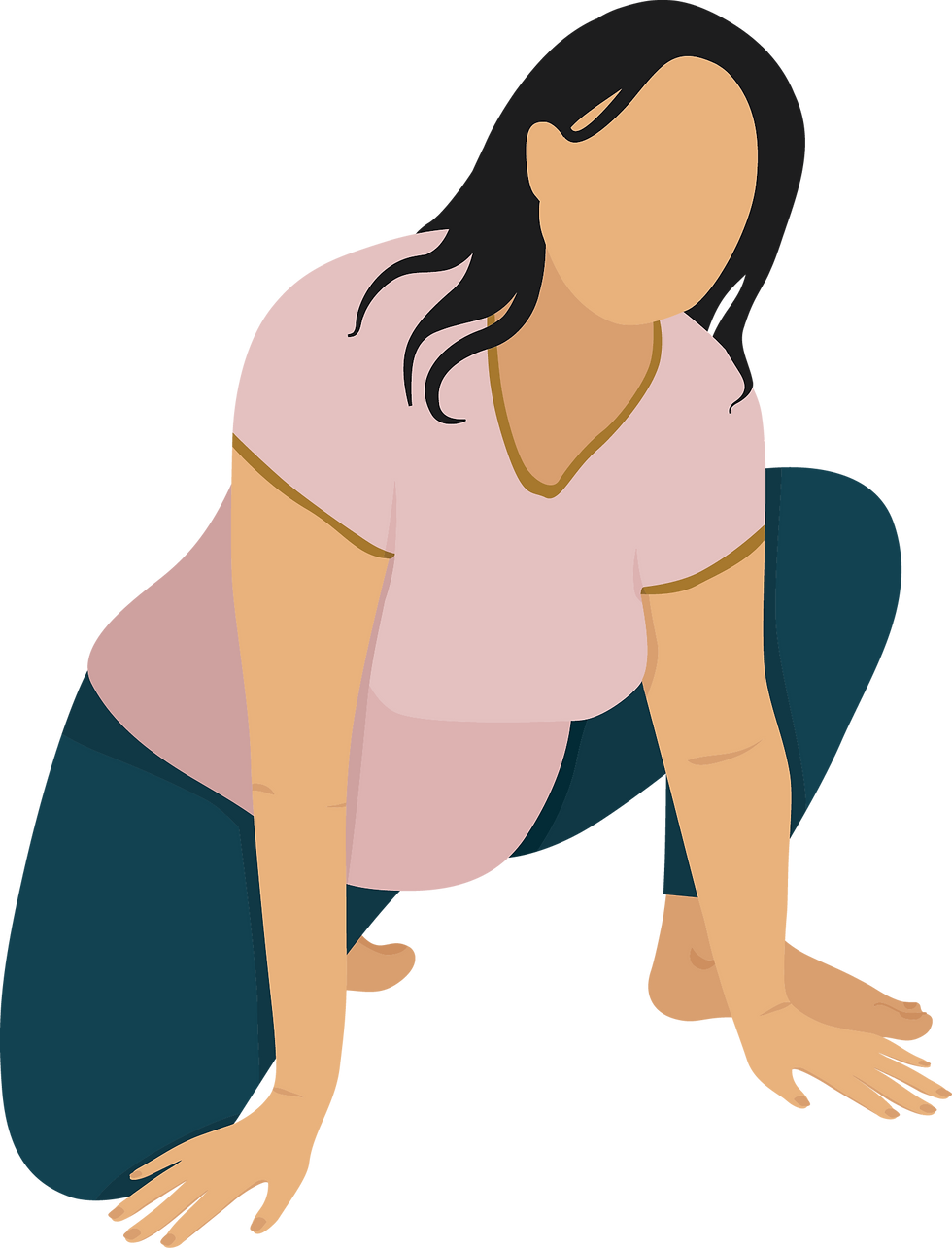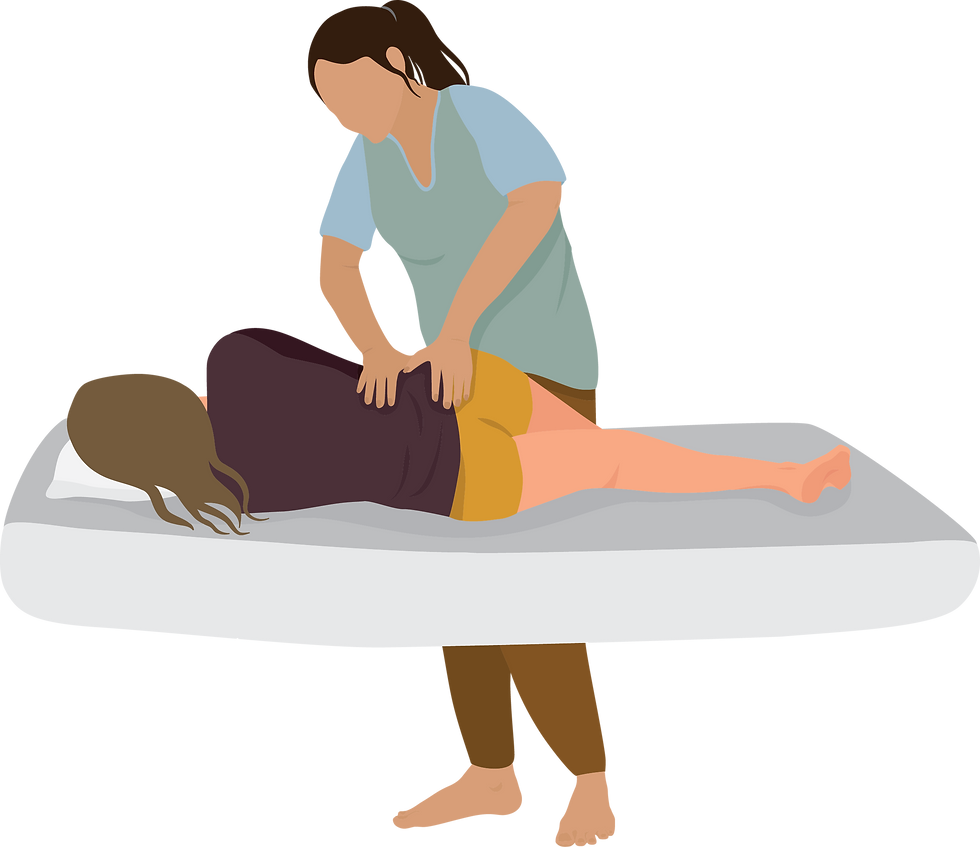How Movement in Labor Supports a Successful VBAC
- Cheyenne Williamson
- Jul 29
- 5 min read
For many birthing people planning a VBAC (vaginal birth after cesarean), one of the most empowering things you can do is move. Movement during labor isn’t just about comfort—it can be a key factor in helping labor progress smoothly, reducing the need for interventions, and supporting your body in doing what it was designed to do.
After a previous cesarean, there can be a lot of emotion tied to labor. Some birthing people want a redemptive experience. Others just want the best chance at a healthy, uncomplicated birth. Wherever you’re coming from, movement can be your ally.
1. Why Movement Matters for VBAC
Promotes optimal positioning and progress
When you change positions regularly—standing, swaying, lunging, squatting—you help your pelvis open and give your baby space to rotate and descend. Movement encourages flexibility in your joints and allows your baby to navigate through the pelvis more efficiently. This is especially important in VBAC labors where spontaneous progress is encouraged.
Shortens labor and reduces interventions
According to research summarized in the Journal of Nursing and Midwifery Sciences and the Cochrane Review, upright and mobile positions in labor are associated with shorter labors, decreased use of Pitocin, and fewer cesareans. This is especially relevant for VBAC, where spontaneous labor progression is often preferred. Staying upright and active supports the natural curve of the uterus, enhances contractions, and uses gravity to bring the baby down.

Supports comfort and mental resilience
When you move your body, you’re not just helping your baby—you’re helping your mind stay engaged. Movement encourages a sense of agency and connection with the birth process. For many people healing from a previous birth that felt out of control or traumatic, that’s everything.
Being able to adjust, sway, squat, or stretch in response to your body’s signals helps you stay centered and reduces the sense of being a “passenger” in labor. For VBAC parents especially, this sense of control and presence can be healing.
2. VBAC-Friendly Movement Strategies
Here are some great ways to support your body (and baby!) through movement during a VBAC labor:
Walk Early and Often
Walking during early labor helps contractions build and encourages your baby to move down. Even slow laps around your home or a hospital hallway can support rhythm and flow. It’s simple, grounding, and effective.

Try Curb Walking or Asymmetrical Positions
Walking with one foot on a curb or stepping up and down on a stool tilts the pelvis and creates space for baby to rotate. These lopsided movements are especially useful if baby’s position needs a little encouragement.

Use a Birth Ball
Sitting on a birth ball allows for gentle bouncing, rocking, and hip circles. It can relieve pressure, support upright posture, and keep your pelvis open. You can also lean over it in hands-and-knees for back relief or rest.

Hands-and-Knees Positions
Getting on all fours can ease back labor and help a posterior baby rotate. It also takes pressure off your spine and gives your pelvis room to shift. Rocking or swaying adds movement without strain.

Forward Leaning Positions
Leaning forward over a chair, bed, or birth ball uses gravity to help baby engage. These positions also create space at the back of the pelvis and encourage softening of the pelvic floor.

Supported Lunges
With one foot up on a stool or low surface, you can gently lunge to open one side of the pelvis more than the other. This can help a baby descend and rotate, especially if labor feels uneven or stalled.

Side-Lying Release
Lying on your side with your top leg supported by a peanut ball or draped off the bed can soften tension and create space. This Spinning Babies® favorite can be incredibly helpful when things slow down or baby needs to rotate.

Rotate Positions Regularly
Try to change positions every 20–30 minutes, or every few contractions. Even small shifts help prevent fatigue, keep labor moving, and give your baby new opportunities to find their way down.
(All illustrations from A Doula's Guide to Labor Positions)
3. Movement + Monitoring: Working Around VBAC Policies
It’s true that many VBAC labors come with additional monitoring, like continuous fetal monitoring (EFM). That can feel limiting—but it doesn’t mean you’re confined to bed or powerless to move. With a little preparation and advocacy, there’s still plenty of room to stay active and engaged.
Ask your provider ahead of time about:
Wireless or telemetry monitoring, which lets you move around the room freely.
Hands-free EFM options that allow for upright positions, standing, swaying, or using a birth ball.
Intermittent monitoring, depending on your medical history and labor progress—especially if your provider and hospital policies are supportive of it.

Even with continuous monitoring, you can often:
Sit on a birth ball beside the bed.
Sway or rock while standing next to the monitor.
Kneel on the bed while leaning over the raised back or pillows.
Shift side to side in bed with support.
Movement doesn’t have to mean pacing the halls. Sometimes, it’s about small adjustments and gentle positioning that keep you grounded, mobile, and connected to your body. Staying engaged and supported is just as important as staying upright.
4. Prepping your Body for Movement in Labor
One of the best things you can do for your VBAC is start moving before labor begins. Regular, gentle movement throughout pregnancy builds strength, flexibility, and confidence—so that when labor comes, your body already knows how to respond.
Some great ways to prepare:
Daily walking supports circulation, stamina, and pelvic mobility.
Prenatal yoga or guided stretching improves flexibility and awareness of your pelvic space.
Birth ball exercises—like seated hip circles, bouncing, and leaning—help loosen tight muscles and encourage baby’s ideal positioning.
Chiropractic care or bodywork (when available and appropriate) can balance your pelvis and release tension that might affect baby’s descent.
Scar tissue massage near your cesarean site (with professional guidance) can improve flexibility and sensation in the lower abdomen, supporting better connection during labor.

You don’t need a perfect routine—you just need consistency and intention. Even five minutes a day makes a difference. The VBAC Link’s post on “6 Ways to Prep Physically for VBAC” is another great place to start if you’re looking for gentle, practical ideas.
💫 Your body remembers. You can move through this birth differently.
5. A hands-on tool to help
When you’re in labor—or supporting someone who is—it’s easy to forget what position might help with what. That’s exactly why I created
This hands-on resource includes:
✅ Over 60 inclusive, illustrated labor positions
✅ Guidance for when to use each one (slow labor, back pain, epidural, etc.)
✅ Partner support tips
✅ Quick-reference indexes to help you find what you need fast
It’s designed to be used in real time—by doulas, partners, and birthing parents alike. You can grab it in print or as an interactive ebook that works beautifully on a phone or tablet.
Whether you’re planning your own VBAC or helping someone prepare, this guide can help you move through labor with more clarity, confidence, and options.
A huge thank you to The VBAC Link 💛
This post was inspired in part by the amazing resources shared by The VBAC Link. Their blog is full of supportive, evidence-based, and actionable tools for anyone preparing for a vaginal birth after cesarean. If you’re not already following them, I highly recommend checking out their podcast, course offerings, and incredible birth stories.
You deserve to move freely and confidently through your VBAC birth.
If you need a visual guide to help you do just that, I’d love to share A Doula’s Guide to Labor Positions with you.
Let’s keep moving. 💪




Comments